The Country's Biggest Export... Croatian Chocolate!?!
November 4, 2020 - Olive groves and vineyards are iconic elements of the vista on the Croatian coast. They appear frequently, as does the international recognition for the wine and olive oil they produce. This makes it all the more surprising to learn that the country's biggest export is, in fact, Croatian chocolate.
On 4 November 2020, 24 Sata reported the surprising statistics about Croatian chocolate. Their sources are agricultural and food product reports from 2018 and 2019, made by the Croatian Chamber of Commerce. They state that Croatian chocolate and cocoa products were at the top of the export rankings. Croatia wine and Croatia olive oil didn't even get a look-in the top five Croatian exports – the next biggest were corn, tobacco products and then fresh and frozen fish. © Alexander Stein
© Alexander Stein
The production of wine and olive oil in Croatia goes back many thousands of years. The industry for making Croatian chocolate is a baby in comparison – Europeans only encountered cacao beans in the 16th century, while exploring and colonising the Americas. Still, the production of Croatian chocolate does have quite a history.
Bajadera by Zagreb's Kraš is one of the most popular boxes of Croatian chocolate to be given as a gift © Kraš
The oldest maker of Croatian chocolate is Zagreb's Kraš. The company's roots lie in three confectioners from the early 20th century. Union is the oldest chocolate manufacturer in south-east Europe (just two years after its foundation in 1911 was awarded the title of supplier to the royal court in Vienna and Budapest), Karolina, a former flour mill which switched to making biscuits and waffles in 1921 and Bizjak, founded in 1923, which made cookies and wafers. These companies, along with a number of smaller Zagreb confectionery manufacturers were merged in 1950 under the name of Kraš, in honor of Josip Kraš, a Croatian union leader and anti-fascist who was killed in World War II. Their range today includes the bars Dorina and Animal Kingdom, boxed classic Bajadera, chocolate biscuits Domaćica and the wafer bars Napolitanke and Tortica. Kandit's classic Rum bar, made in Osijek. Hands-down the best ultra-cheap Croatian chocolate mini-snack bar © Kandit
Kandit's classic Rum bar, made in Osijek. Hands-down the best ultra-cheap Croatian chocolate mini-snack bar © Kandit
The second oldest company making Croatian chocolate is Kandit, which is today still based in Osijek where its parent company was established way back in 1905 as a sugar production outfit. It switched to making waffles, sweets and chocolates in the early 1920s. Its range today includes the kids' favourite Choco Banana and hands-down the best ultra-cheap Croatian chocolate mini-snack bar Rum. It's a classic. Keeping on-trend, the relatively recent No Guilt series of high-quality, no-sugar chocolate bars has made a great addition to Kandit's offer. This range is the only Croatian chocolate currently recommended by the country's diabetic association. Kandit's No Guilt range has no added sugar and several bars with a high cacao content © Kandit
Kandit's No Guilt range has no added sugar and several bars with a high cacao content © Kandit
The third big player in the Croatian chocolate scene is Zvečevo, from Požega. The company traces its roots back to 1921, but its association with chocolate only really began in 1934 when Swiss company Nestle began to manufacture there (the association continued until 1995). Zvečevo is notable as having invented the combination of toasted rice and milk chocolate in a bar. Now considered a classics pairing across the world, it was first produced in 1964 in Požega under the name of the Mikado bar. As well as still making this classic of Croatian chocolate, Zvečevo now makes a dark chocolate version, chocolate for use in home cooking and a popular range of strong alcoholic drinks. It has won several awards for its ethical and eco-friendly business practices. Zvečevo's Mikado range. With Mikado, the Požega-based manufacturers were the first in the world to combine rice and chocolate © Zvečevo
Zvečevo's Mikado range. With Mikado, the Požega-based manufacturers were the first in the world to combine rice and chocolate © Zvečevo
Standard Croatian chocolate available on the high street can be a surprise to visitors. It has a higher content of the cheaper ingredient (sugar) than the more expensive ingredient (cacao) than many chocolates made in more westerly European countries. But, that's the way Croatians seem to like their chocolate. Well, most of them. According to a survey conducted in 2017 by the Hendal agency and JaTRGOVAC magazine, 63.5% of asked Croatians said they choose domestic chocolate products above the 36.5% who more often buy foreign chocolate products. © Nawal Escape
© Nawal Escape
Data from the Central Bureau of Statistics state that in 2018 the country produced 18,799 tons of Croatian chocolate and cocoa products. Over 800 million kuna's worth of Croatian chocolate was exported in the same year. The bond between Croats and their Croatian chocolate is strong, the love heartfelt. It is no doubt this affection for confection that has prompted some of the third of Croats who go in search of foreign alternatives, for the introduction of premium chocolate ranges by the aforementioned big manufacturers of Croatian chocolate and for the rapid increase in artisan and handmade Croatian chocolatiers over recent years.
Croatian chocolate smaller and artisan producers
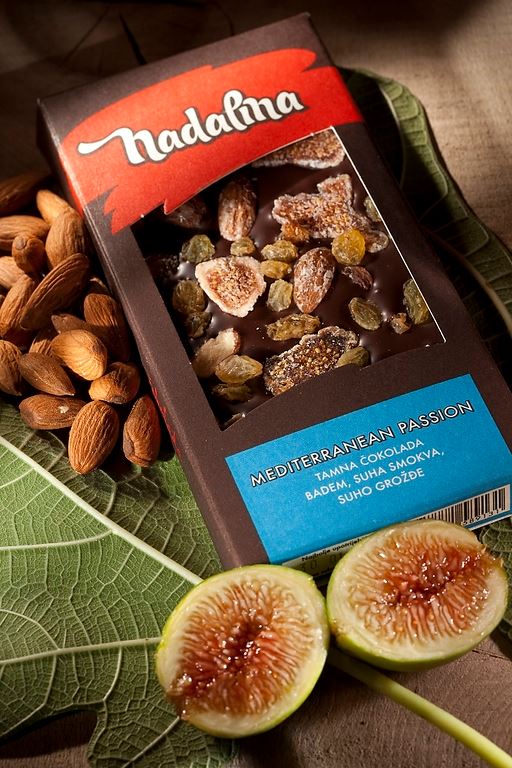
Split-based Nadalina have become increasingly recognised over recent years © Nadalina
Split-based Nadalina make high-quality raw chocolate bars with non-standard flavours like rosemary, figs and olive oil. They held the Guinness World Record for making the world’s largest chocolate bar and in 2017 were voted the world's third-best at the International Chocolate Awards. Vilma slastice from the island of Rab combine dark chocolate with flavours like Pag cheese, white truffles and lavender. Salt manufacturers Solana Nin have a salt-infused chocolate and Zagreb's Chozen make impossibly-pretty handmade Croatian chocolate pralines with a surprising and adventurous range of flavours. Besides these, the list of small manufacturers of Croatian chocolate grows every year. It seems that the love affair between Croats and their chocolate is far from finished, and that's certainly good news for Croatian exports. Impossibly pretty handmade chocolate truffles, produced in Zagreb by Chozen © Chozen
Impossibly pretty handmade chocolate truffles, produced in Zagreb by Chozen © Chozen
For the latest travel info, bookmark our main travel info article, which is updated daily.
Read the Croatian Travel Update in your language - now available in 24 languages
Continental Croatia Trains: Inland Opens Up With Green Travel
October 3, 2020 - With charter airlines in a state of flux and Croatia Railways beginning a renewal of their fleet in Slavonia, are continental Croatia trains the eco-friendly and best way to unlock the inland's amazing potential?
Everything changes. Nothing stays the same. Even before 2020 arrived, lifestyles and trends were headed in new directions. Eco-tourism and agro-tourism were two of the fastest-growing areas within the travel sector, this behaviour change a response to concerns about the environment. And nowhere in the country stands better poised to take advantage of this interest than continental Croatia.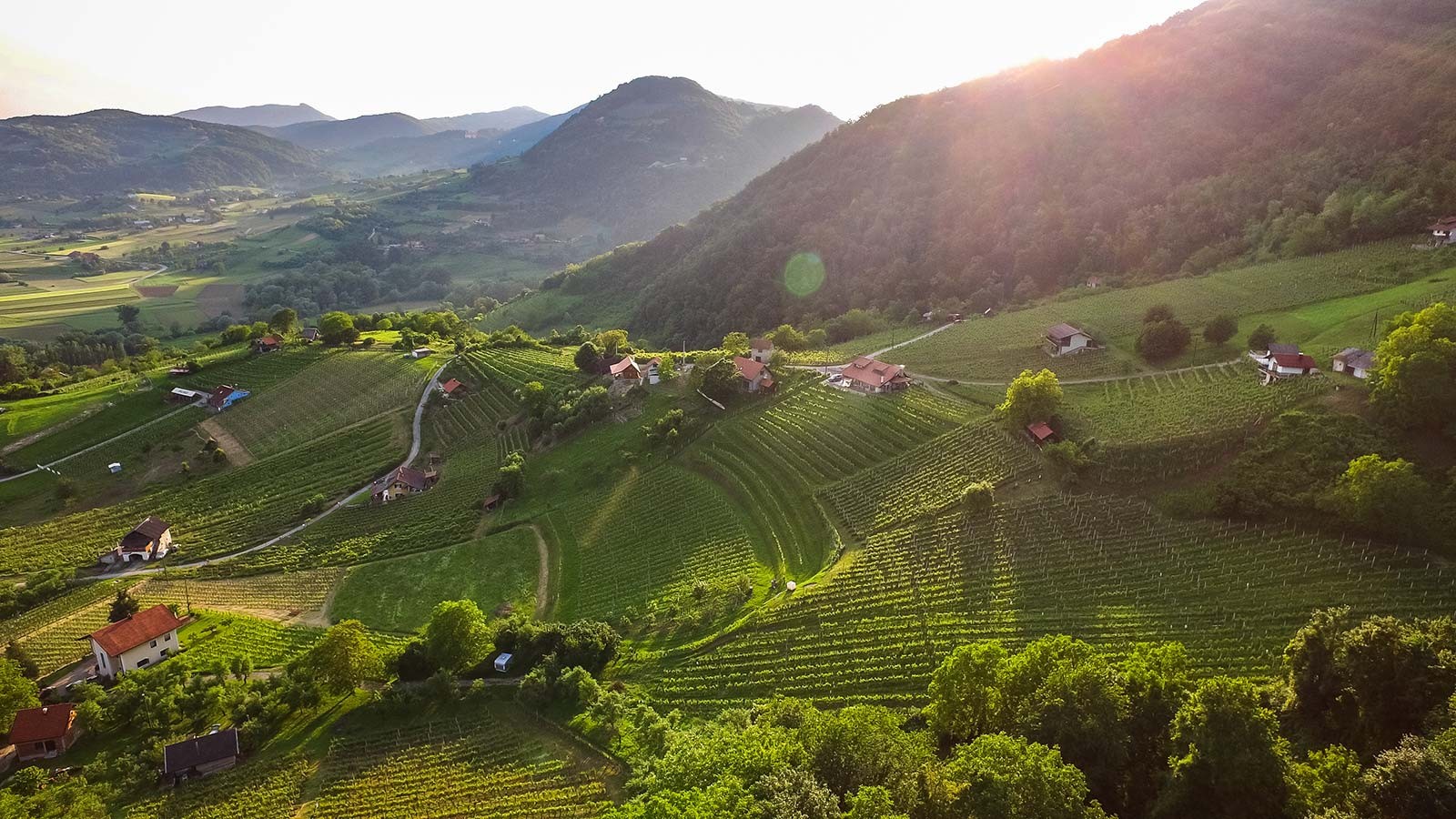 Impossibly pretty Zagorje - the region lies just north of Zagreb and is accessible by continental Croatia trains © Ivo Biocina / Croatia National Tourist Board
Impossibly pretty Zagorje - the region lies just north of Zagreb and is accessible by continental Croatia trains © Ivo Biocina / Croatia National Tourist Board
From the impossibly pretty hills of Zagorje, the peaceful rivers of Karlovac county and the hidden vineyards that surround the capital Zagreb to the vast Pannonian flatlands that stretch to Slavonia, Baranya, Vukovar-Srijem and beyond, the varied topography of continental Croatia is wild, exciting and - by many - wholly undiscovered.
This is land where agriculture and nature thrive side by side, where the stresses of modern-day existence ebb away as you readjust to a way of life that would look mostly familiar to the people who lived here centuries ago. These are places where you can truly be at one with yourself and with your surroundings. In continental Croatia, you often find yourself in an environment that is both timeless and traditional, yet wholly contemporary in regards to its ecological aspirations. And you're never far away from an exciting city environment that you can dip into on a whim – not just Zagreb, but Osijek, Slavonski Brod, Karlovac, Sisak and Varaždin too.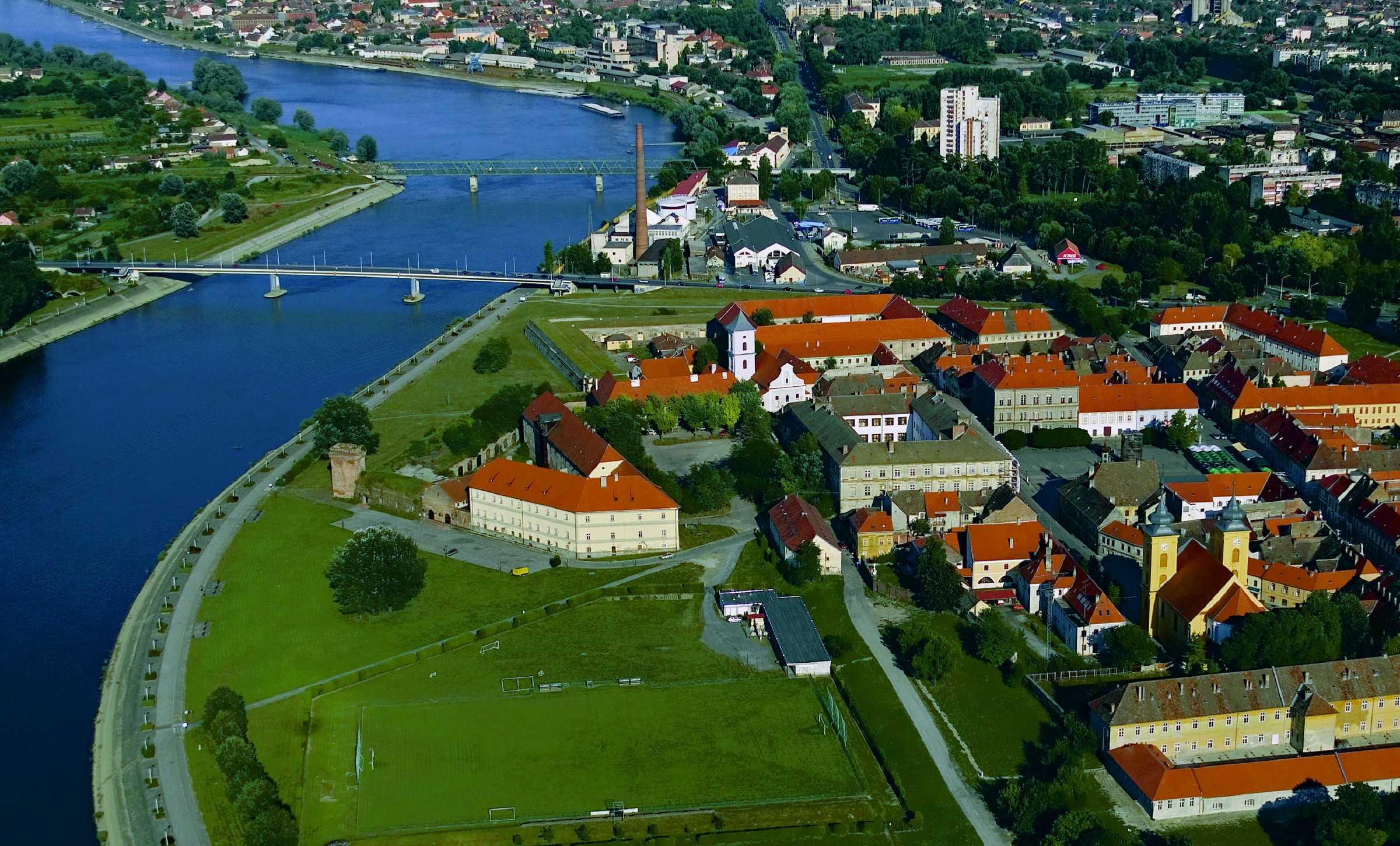 To those who really know and love Croatia, Osijek is simply unmissable. It is both the capital of and the doorway to Slavonia and Baranya and should be more accessible by continental Croatia trains. Sadly, international transportation links to the city by air are also quite poor. Improvements in accessibility to Slavonia and Baranya by rail and road are imminent © Romulić & Stojčić
To those who really know and love Croatia, Osijek is simply unmissable. It is both the capital of and the doorway to Slavonia and Baranya and should be more accessible by continental Croatia trains. Sadly, international transportation links to the city by air are also quite poor. Improvements in accessibility to Slavonia and Baranya by rail and road are imminent © Romulić & Stojčić
Unlocking the incredible potential of continental Croatia relies on getting the message out there and facilitating travel to these regions
In recent TCN features we have detailed that motorways within Croatia are among the best in Europe - once you're inside Croatia, travelling by car (or bus) between the regions couldn't be easier. We have also seen evidence of the huge interest in travelling here by rail and using continental Croatia trains.
Of all the modern methods of long-distance travel, rail is by far the most eco-friendly. What better way to begin an environmentally friendly holiday than by arriving on continental Croatia trains? When the country wisely decided to prioritise its internal motorway system, a modern and fast inter-regional rail network was put on the back burner. Nowhere suffers greater from this decision than continental Croatia.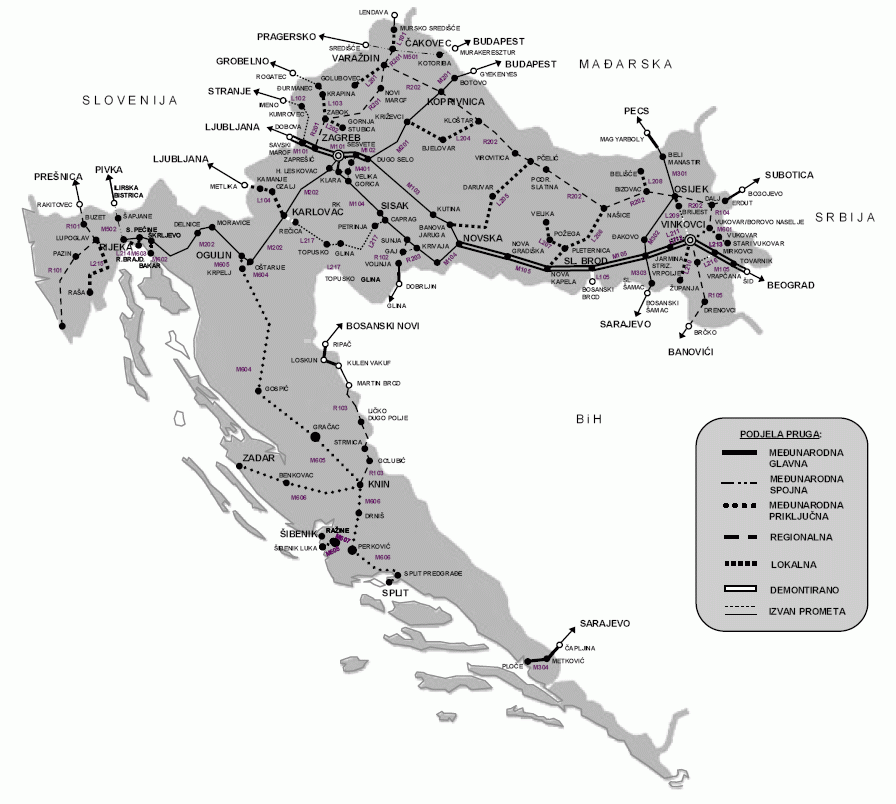 The Croatian rail network © Croatian Official Document uploaded to Wikipedia by Epepe
The Croatian rail network © Croatian Official Document uploaded to Wikipedia by Epepe
The only high-speed line that currently exists in Croatia links Rijeka to Budapest, via Zagreb and Koprivnica. Planned improvements hope to cut journey times between Zagreb and its nearest coastal city to an hour. Same as it ever was - Rijeka was the first Croatian city to be connected internationally by rail. That line also ran into the heart of Austro-Hungary and facilitated upper-class travel to places like Opatija. But does it best benefit the country to invest in more links to the coast or in continental Croatia trains? Well, the inland is not being ignored. Upgrades are being made to continental Croatia trains.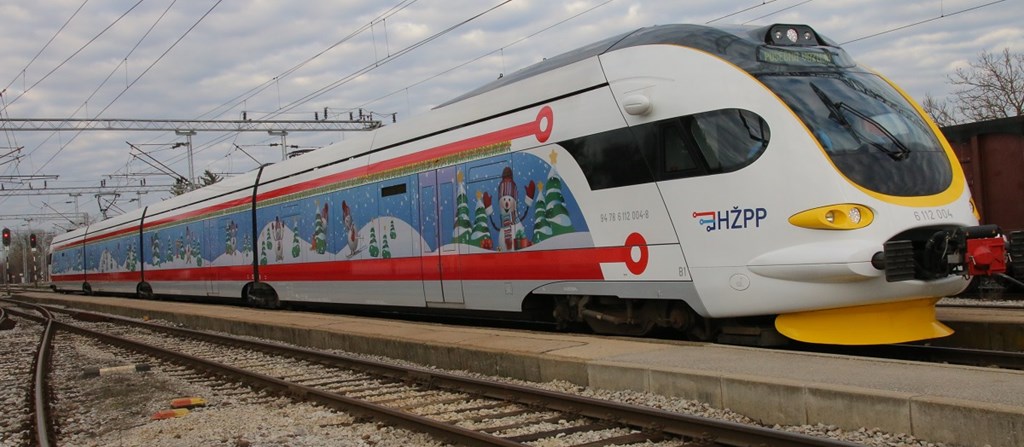 This impressive beast actually services the country's coast. But would more investment in the continental Croatia trains network better service more people and help unlock the inland to tourists? Around 70% of the country's inhabitants live in continental Croatia © HŽPP
This impressive beast actually services the country's coast. But would more investment in the continental Croatia trains network better service more people and help unlock the inland to tourists? Around 70% of the country's inhabitants live in continental Croatia © HŽPP
The rail link between Zagreb and Slavonski Brod is so historic that it was once part of the four routes of the Orient Express. It has been maintained to a standard where you can make a relatively quick journey from the capital to Vinkovci via Slavonski Brod. The same cannot be said for rail travel to Osijek, the access point to Baranya and much more. So slow is the connection between Osijek and Zagreb that it has been possible over recent times to reach the Slavonian capital quicker by taking the train to Vinkovci, then the bus to Osijek, rather than travelling direct by rail.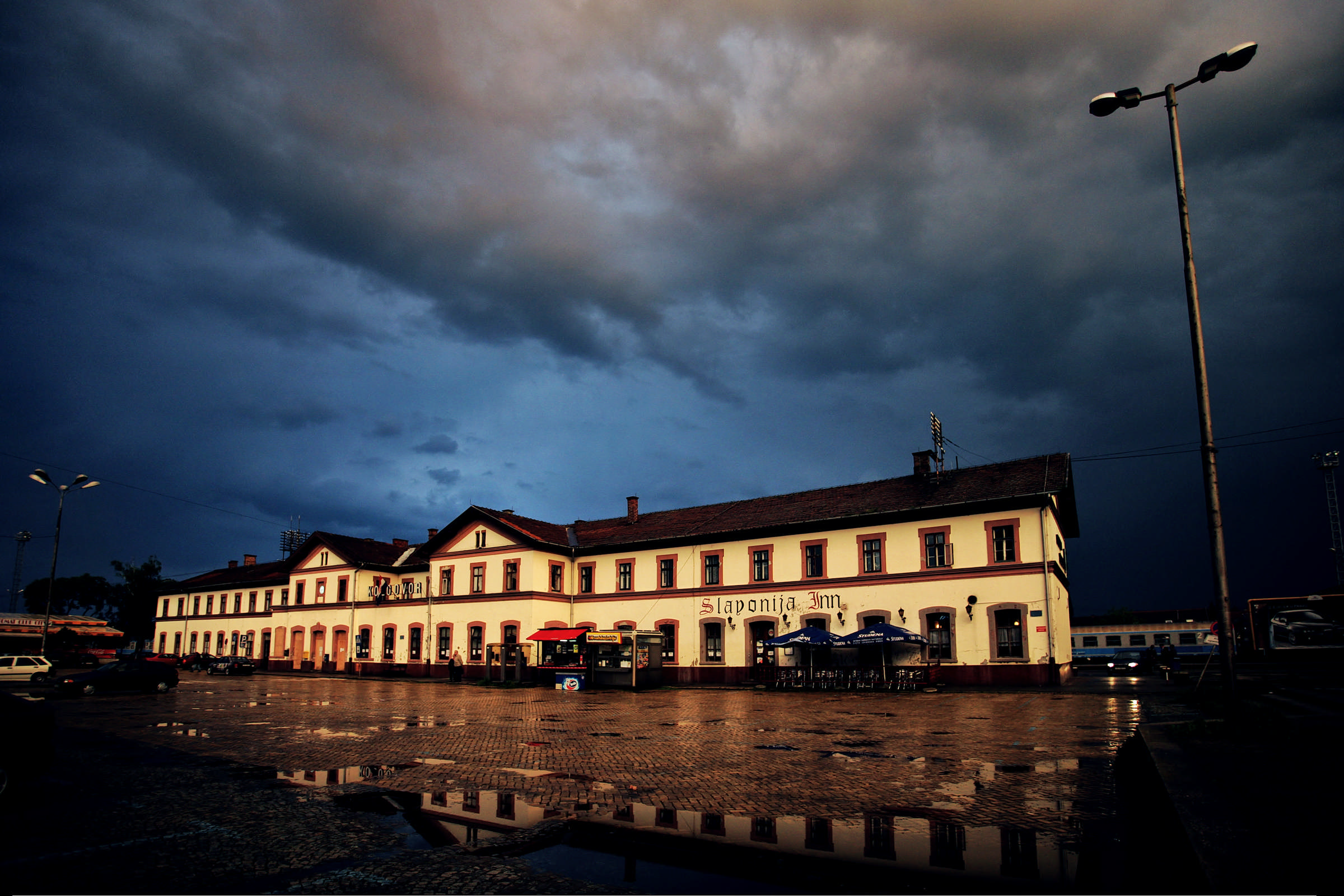 Osijek train station. A renovation to the building is planned for the near future © Romulić & Stojčić
Osijek train station. A renovation to the building is planned for the near future © Romulić & Stojčić
However, in February this year, Croatian Railways introduced four direct daily lines between Slavonski Brod and Osijek. And there will be a new tilting train line that will run between Zagreb to Osijek on Friday afternoon and from Osijek to Zagreb on Sunday afternoon, facilitating student travel. On October 15, the first low-floor train will run between Osijek and Vinkovci as an additional part of the renewal of their continental Croatia trains fleet in Slavonia. The welcome return of Croatia's second-oldest international rail line - linking Osijek to Pécs in Hungary, via Beli Manastir and Baranya - was introduced in late 2018.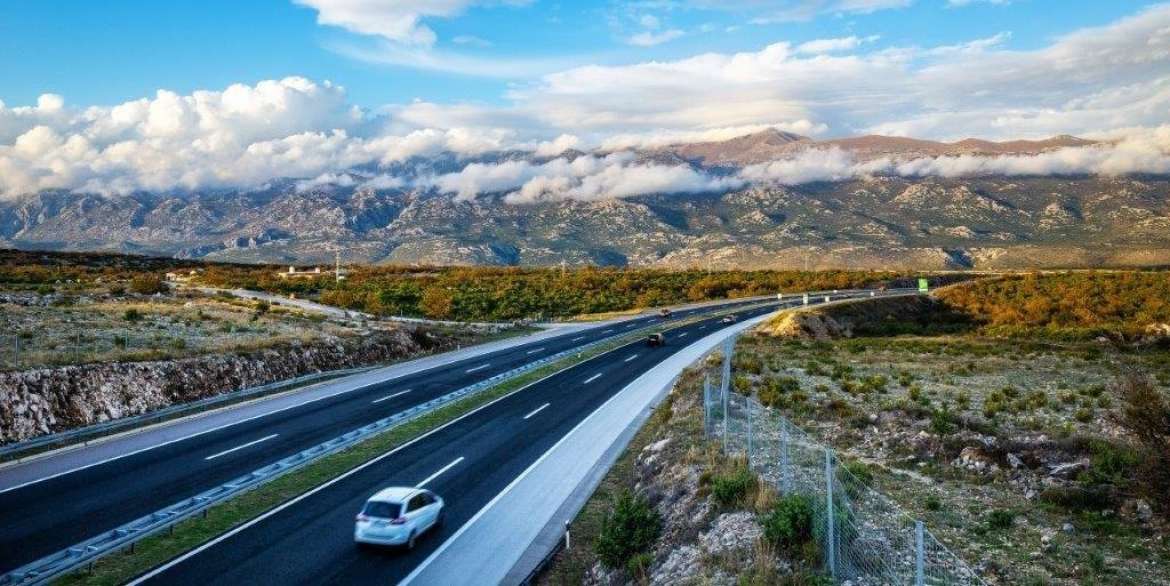 A motorway stretch between Metković and Dubrovnik, integrating the Pelješac bridge and the Croatian segment of the European corridor are the final big remaining projects in a three-decade-long undertaking to give Croatia one of the best motorway networks in Europe. Should Croatia's rail network be next? © Hrvatske Autoceste
A motorway stretch between Metković and Dubrovnik, integrating the Pelješac bridge and the Croatian segment of the European corridor are the final big remaining projects in a three-decade-long undertaking to give Croatia one of the best motorway networks in Europe. Should Croatia's rail network be next? © Hrvatske Autoceste
Access to Slavonia and Baranya will also be massively facilitated upon completion of the European corridor, which will connect North Europe to the Adriatic. Starting in Budapest, it necessitates the building of a bridge near Beli Manastir. Thereafter the motorway will pass by Osijek, connect to the Zagreb-Slavonia motorway near Lipovac, then pass through Bosnia and its capital Sarajevo and on to Ploče.
The removal of budget airline flights to the airport in Osijek remains a hindrance to attracting many international visitors to Slavonia and Baranya. However, with charter airlines facing the greatest uncertainty of all modes of transport at the current time, though their return is a must, it is perhaps now an ambition that should remain more long term. For the immediate future, improvements to rail travel look to be a brilliant way of opening up not only Slavonia, Baranya and Vukovar-Srijem, but also an eco-friendly access point capable of serving the whole of untapped continental Croatia.
For the latest travel info, bookmark our main travel info article, which is updated daily.
Read the Croatian Travel Update in your language - now available in 24 languages
Six of the Best! Croatian Protected Produce On Sale in China
September 18, 2020 – Six items of Croatian protected produce are among the 100 European items to go on sale in China
Six items of Croatian protected produce are among the 100 European items to go on sale in China. In a reciprocal deal, 100 Chinese products will also be recognised and recommended on the European market.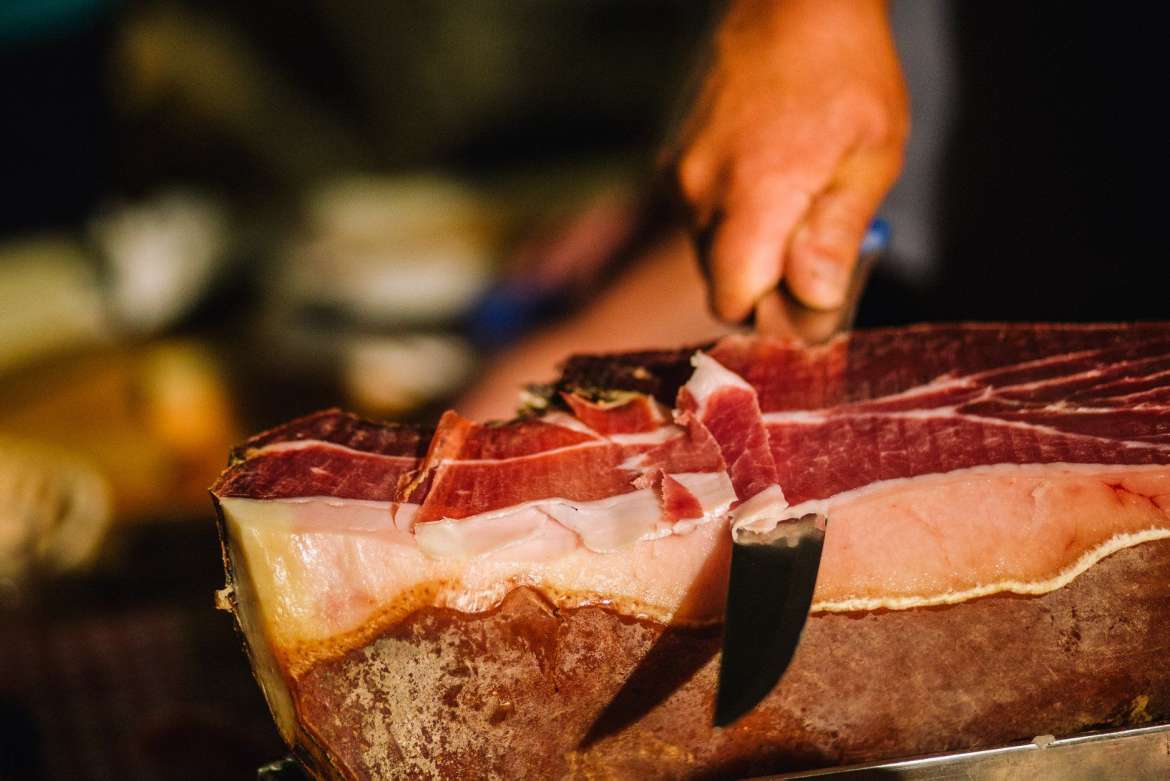 Dalmatian prosciutto © TZ Vrgorac
Dalmatian prosciutto © TZ Vrgorac
Baranja kulen, Dalmatian prosciutto, Drniš prosciutto, Lika potatoes, Dingač wine and Neretva mandarins are the premium six Croatian protected produce chosen to be among the European 100. All of the Croatian protected produce is already recognised at a national and at an EU-level and designated its status based on its unique place of origin. Dingač wine © Silverije
Dingač wine © Silverije Neretva Mandarins
Neretva Mandarins
The European products will be specially marked and receive special privileges when they go on sale in China. Alongside the Croatian protected produce, other items on the European list are French champagne, Greek feta cheese, Italian Parma prosciutto, Italian mozzarella, Irish whiskey and Portuguese port. On the Chinese list of products are distinct varieties of rice, bean and vegetable products, some of which will already be popular with Europeans who eat or cook Chinese cuisine.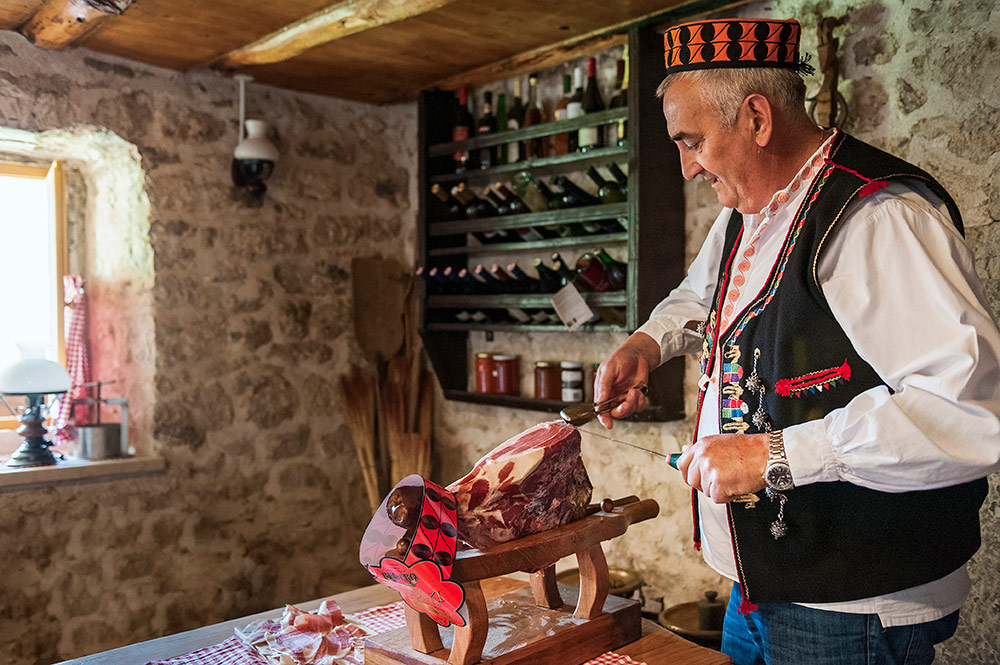 Drniš prosciutto © Tourist Board of Drniš
Drniš prosciutto © Tourist Board of Drniš
The full list of Croatian produce protected at an EU-level currently includes Istrian olive oil, Dalmatian prosciutto, Pag cheese, Lika lamb, Poljički Soparnik, Zagorje turkey, Korčula olive oil, Istrian prosciutto, Sour cabbage from Ogulin, Neretva mandarins, Slavonian honey, Drniš prosciutto, Cres olive oil, Pag salt, Baranja kulen, Bjelovarski kvargl, Varaždin cabbage, Pag lamb, Šolta olive oil, Meso 'z tiblice, Zagorje mlinci, Krk prosciutto, Lika potatoes, Slavonian kulen, Krk olive oil. Baranja kulen, featured within a traditional Slavonian platter © Romulić & Stojčić
Baranja kulen, featured within a traditional Slavonian platter © Romulić & Stojčić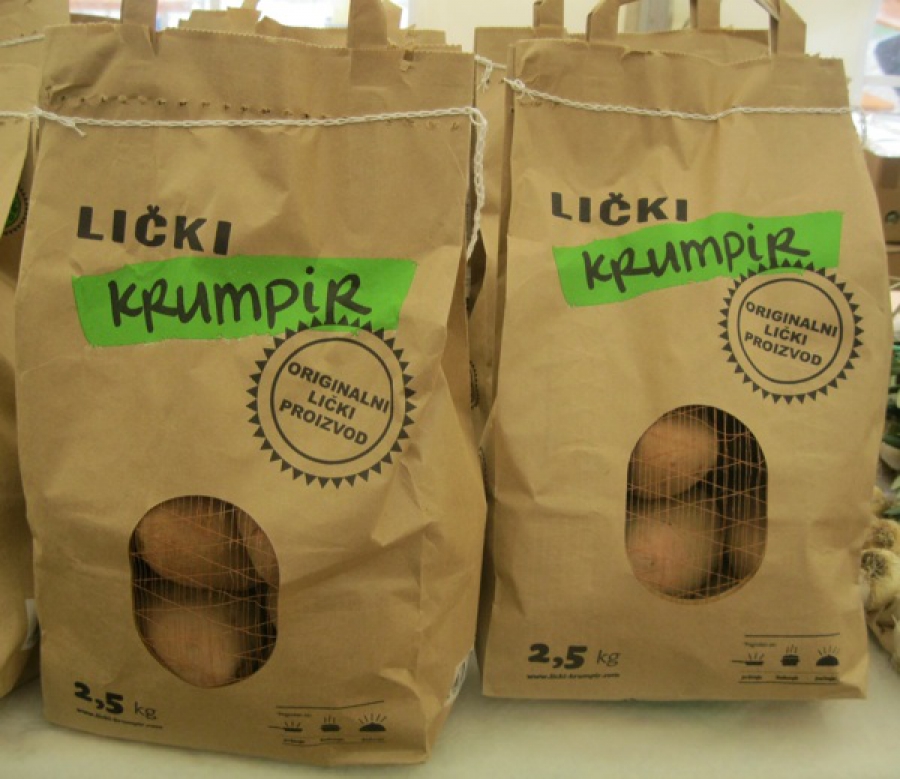 Lika Potatoes
Lika Potatoes
For the latest travel info, bookmark our main travel info article, which is updated daily.
Read the Croatian Travel Update in your language - now available in 24 languages
Osijek Have The Best Coach In The Croatian First League Nenad Bjelica
Friday, 4 September 2020 - Dinamo Zagreb's loss is NK Osijek's gain, as the rising Slavonians make a surprise start to the new season, lead by the best coach in the Croatian first league Nenad Bjelica
There has been a taste of optimism in the air of Osijek for a while now. And much of it has been centred around the city's NK Osijek football club. However, expectations have flown through the roof this week as it has all but been officially confirmed that the team will start the impending season under the guidance of the best coach in the Croatian first league Nenad Bjelica.
It is the most surprising move within the Croatian first league since Niko Kranjčar left his boyhood club Dinamo for bitter rivals Hajduk Split in 2005. At the start of last season, Bjelica was the coach of Croatian champions, Dinamo Zagreb.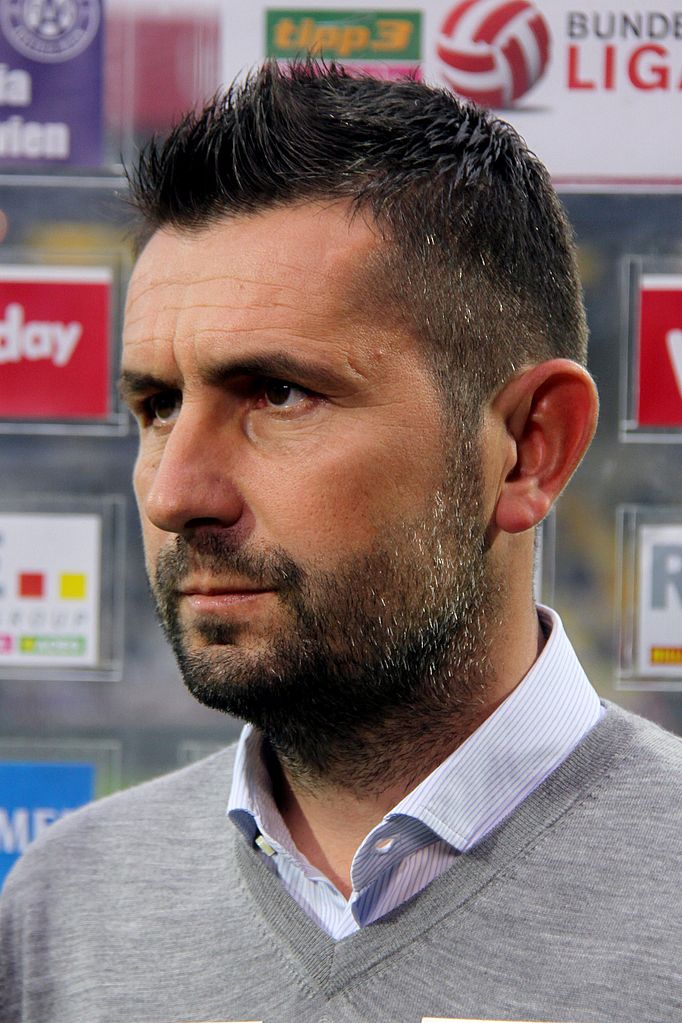
The best coach in the Croatian first league Nenad Bjelica, pictured during his time at FK Austria Wien © Steindy
But, this time, there can be no bitterness directed towards the moving man, no anger assigned to Bjelica for seeking a job in his hometown after his dismissal from Dinamo. Even if you attribute blame to those running the farce that Dinamo Zagreb has become, this latest shame for the club comes at the end of a very long list of grievances. Grievances that Dinamo supporters have proven all too quick to forgive, as soon as their wealthy club again win the league or lift the cup.
In recent years, Osijek has suffered more than any other major Croatian city from population decline. The streets of its westerly lying centre are often deserted in comparison to how the city was 20 years ago. And that's not just because of out-of-town shopping centres. Many young people born here, unable to find work for their considerable talents and skills, can now be found in Germany or Ireland. An accepting but unhappy resignation lies with those who've remained. It shouldn't be like this. Those emerging from the city's excellent university are among the best educated in Croatia. The computer sciences and programmers who graduate from Osijek are second to none.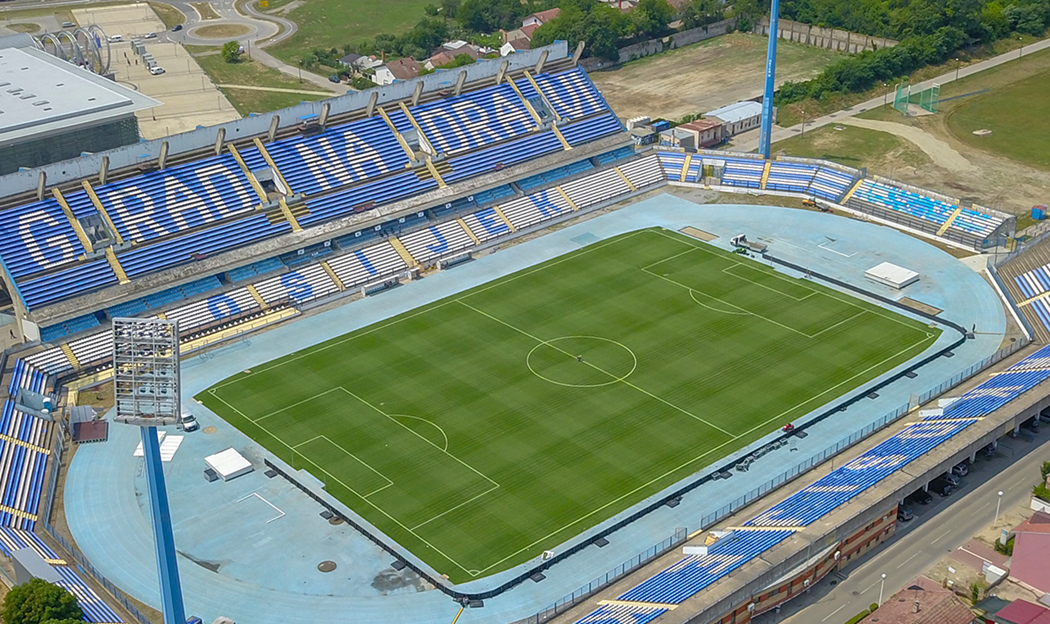
Gradski Vrt, on the border of Sjenjak, in Osijek. It is the current home of NK Osijek. It will be used for the B team when the new stadium is finished © NK Osijek
One of the chief mood lifts for the men deserted by old school friends has been the attendance of Gradski Vrt, which currently remains NK Osijek's home ground. Not so long ago, it was a visit that only added misery. Though they are one of only four clubs never to have been relegated from the Croatian first league, NK Osijek was facing financial ruin as recently as 2016. But, then, Hungarian businessman Lőrinc Mészáros and Croatian Ivan Meštrović bought majority shares in the club.
Under the new regime, the squad was improved and a can-do spirit returned to the stands at Gradski Vrt. The club finished 4th in the league in 2017, just after celebrating the 70 year anniversary of playing under the name NK Osijek. It was their highest league finish in nearly 10 years and took them to qualifying matches for the 2017–18 UEFA Europa League. There, they beat Santa Coloma, Luzern and even former European champions PSV before their run was halted by Austria Wien. It hardly mattered. The ambition and optimism had returned for good. You could feel it throughout the city, not least when rumours of a brand new stadium began to filter through the stands.
Securing fourth in the domestic league the next year again took Osijek to the UEFA competition and in April 2018, plans for the impressive new Pampas Stadium were revealed. A state of art UEFA category 4 stadium for 12,000 rain-shielded fans, the new ground will be fully compatible with televised coverage of international competitions. This is an indicator of Osijek's ambition. Not a day goes by when football fans from the city - indeed, from all over Croatia - check on the progress of construction.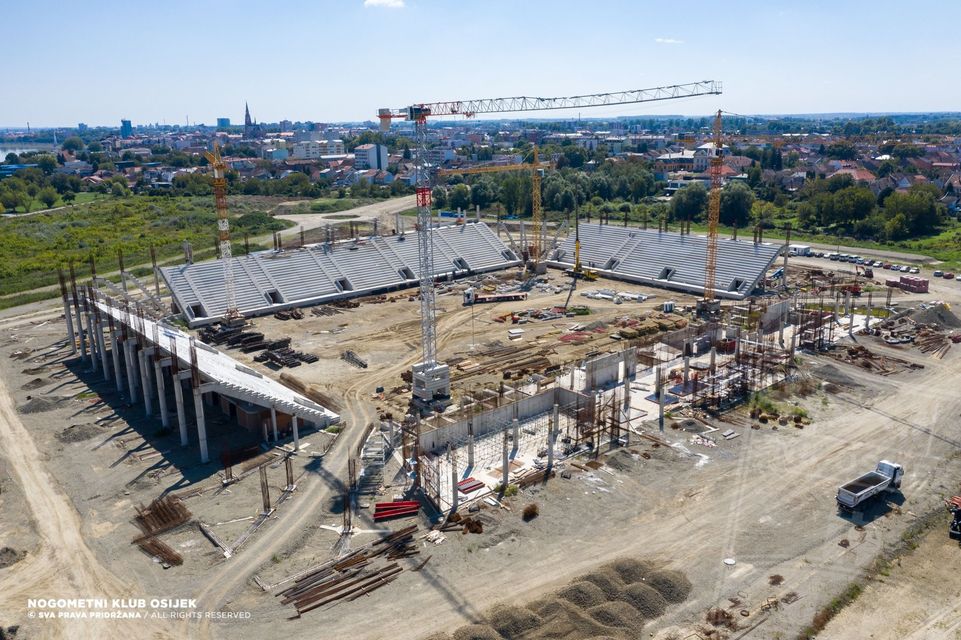
The progress of construction of Osijek's new ground is being watched by football fans across Croatia. it is a fitting home for the best coach in the Croatian first league Nenad Bjelica © NK Osijek
That the team should be starting the new season with the best coach in the Croatian first league, Nenad Bjelica, is yet another measure of that ambition. But, unlike the visible rise of the new stands, few saw this one coming. After the mess of his departure from Dinamo Zagreb, it had been anticipated that Bjelica might go to La Liga or Serie A. He's certainly good enough.
A former player for NK Osijek, Bjelica spent four early seasons at his hometown club before moving to Spain to play for Albacete Balompié, Real Betis and Las Palmas. Following a spell of injuries, he returned to Osijek for two seasons and featured for them in the UEFA Cup competition. He played the last eight years of his career as a professional in Germany and Austria, before retiring in 2008. He bowed out after having represented Croatia nine times as part of the national side.
He began his managerial career at the same club from which he retired as a player, Austria's FC Kärnten, but by 2013 had moved to Austria Wien where he helped secure their qualification for the Champions League group stage. He spent time in Italy and Poland before returning to the Croatian first league Nenad Bjelica signed for Dinamo Zagreb in 2018.
After a successful first year in charge, most were of the opinion that in the Croatian first league, Nenad Bjelica was the best coach. After guiding the team through a good Europa League campaign, Bjelica's successes resulted in attaining the highest number of qualifying places ever for Croatian domestic teams in European competition. He returned Dinamo Zagreb to the Champions League for the first time in three years before his winning run at the club was halted by their latest debacle.
How NK Osijek's new Pampas stadium complex will look when complete © NK Osijek
How they could have let him slip through their fingers is eye-raising and yet, at the same time, not surprising. This is Dinamo Zagreb. Their supporters are resigned.
“Honestly, I am so happy for Osijek,” frustrated Dinamo Zagreb supporter David Kutleša told TCN upon hearing of the appointment.
“He accepted Osijek? What a legend!” said another, Martin Žunec. “This next season is going to be sick (great).”
For too long have the tarnished successes of Dinamo Zagreb taken the full limelight in Croatian domestic football. Though eminently predictable, their lifting of consecutive cups has nevertheless brought cheer to supporters of a club riddled with trouble. Such domestic achievements may not immediately follow Bjelica to Slavonia. But, it barely matters right now. NK Osijek will start the new season with the best coach in the Croatian first league, Nenad Bjelica. In his acceptance of this appointment, it is to a building momentum of optimism that Bjelica is contributing. And nowhere is that more needed than Osijek.
The official announcement of the Croatian first league Nenad Bjelica's appointment to NK Osijek is expected on Saturday 5 September 2020
For the latest travel info, bookmark our main travel info article, which is updated daily.
Read the Croatian Travel Update in your language - now available in 24 languages
49-Year-Old Man Stabs Two Children In Darda And Mece, Near Osijek
August 17, 2020 -Two shocking incidents, one in Darda, one in Mece, happened at around 10am this morning. Police have arrested a man.
Two children were this morning stabbed in the areas of Darda and Mece, just north of Osijek. The incidents happened at around 10am. The injured children were taken to the Clinical Hospital Centre in Osijek for treatment.
Police took a 49-year-old man into custody at approximately 10.40am. He is described as being a Croatian national. Further details about the man, such as his name and ethnicity, have not yet been revealed. It is understood police are not looking for anyone else in connection with the crime.
Local portal SiB.hr are reporting that the 49-year-old first stabbed a boy with a screwdriver at the NTL store in Darda, then returned to Mece by bicycle where he knocked down a girl on a hoverboard before stabbing her repeatedly.
Investigations into the incidents are taking place simultaneously in Darda and Mece, lead by the Deputy County State's Attorney from Osijek in cooperation with Osijek-Baranja Police. After being examined, one of the children was released from hospital and sent home with minor injuries. The other has been kept in for treatment. Police expect to release more information in the next 24 hours.
Visit Osijek on the Croatian Road Less Travelled
July 8, 2020 - TCN travel series The Croatian Road Less Travelled with Marc Rowlands. In this edition, we visit Osijek in eastern Croatia, on the banks of the Drava river and look at things to do in Osijek
Situated in the far east of Croatia, the city of Osijek is a sizeable distance from the regular coastal or capital city footfall of visiting tourists. Indeed, considering its history, importance and its vast, unique appeal, its surprising just how many Croatians you meet who have also never been to Osijek. Sitting on the banks of the Drava river, the city is the de facto capital of Slavonia and the administrative centre for Osijek-Baranja county and served as a strategically important outpost in the Roman, Ottoman and Austro-Hungarian empires. Osijek was the first city in Croatia to have a tramway and, after Rijeka, the first Croatian city to be serviced by an international train route (running to Pécs in Hungary via Beli Manastir, this very line was re-opened in 2018).
Osijek's Old Town, Tvrđa, is the largest and best-preserved ensemble of Baroque buildings in Croatia. It sits spectacularly by the Drava river, separated by the defensive walls of its Hapsburg-era fort © Romulić & Stojčić
Why visit Osijek?
Osijek is an incredibly beautiful place and perhaps Croatia's only option which simultaneously offers all the thrills of a genuine city coupled with incredible nature. It's possible to walk from one end of the city to the other passing only through statue-littered parks, the air is constantly fresh and, being Slavonia, the ground is entirely flat, making it a great place for bicycle enthusiasts. It's also a great place for swimming and other water activities such as fishing, rowing and boating. Osijek has a range of great nightlife options; three catering to fans of turbo-folk, two for those who prefer tamburica and Croatian folk music, one for students, one for the alternative crowd and several bars which host live music including jazz. Specialist monthly club nights offer drum n' bass, hip hop, house music and the techno night, Traum, is well known across Croatia and fronted by two of the country's finest DJs in the genre - Insolate and Volster.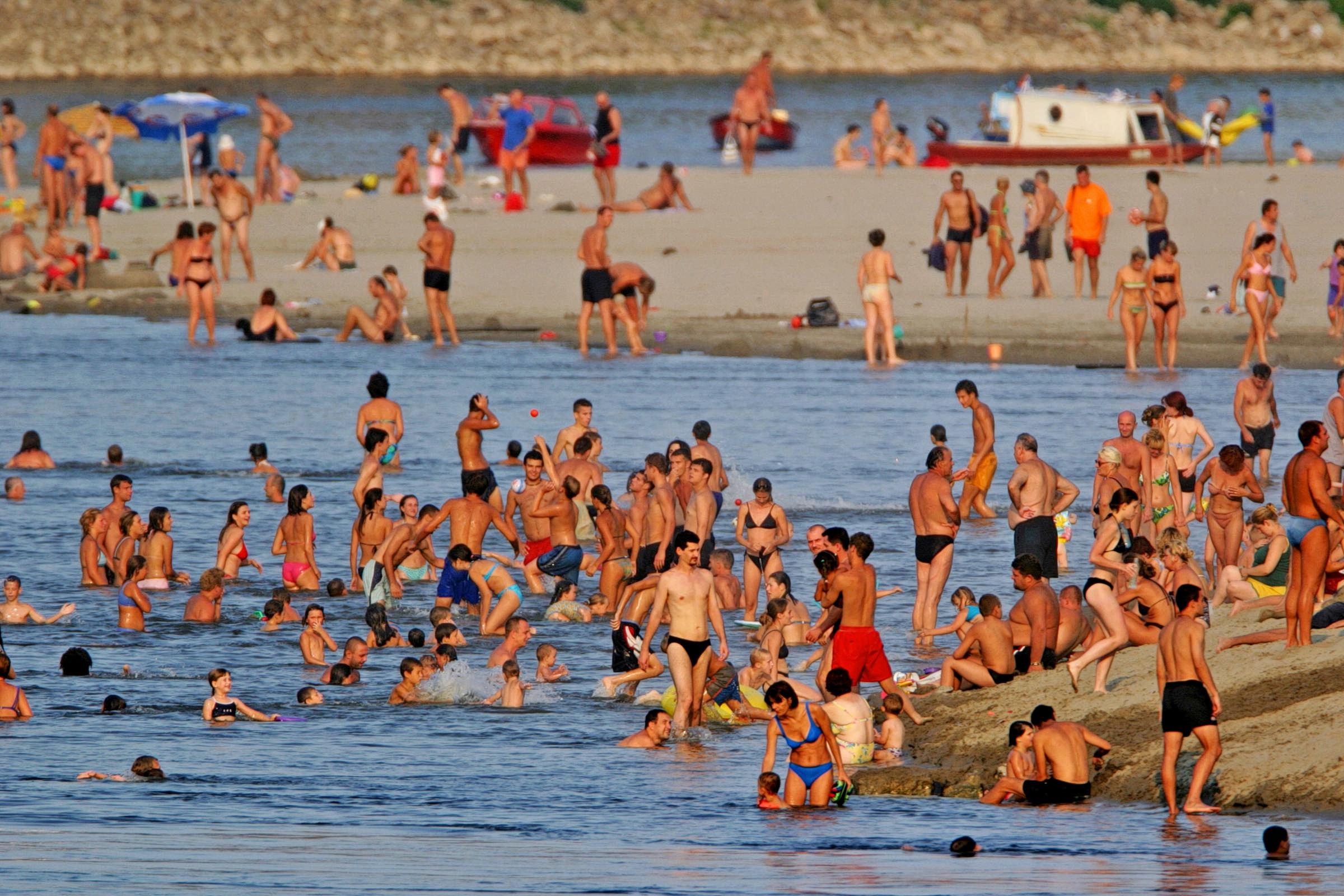
Cooling off in the Drava river, right in the heart of the city - just one of Osijek's great swimming options © Romulić & Stojčić
Osijek has, by far, the longest waterfront promenade in Croatia. Both banks of the Drava are pedestrianised. On the side of the city, the prom is lined with parks, cafes, bars and restaurants built within converted river-cruising boats. This side also holds the impressive Osijek city walls, behind which lies the Old Town centre, Tvrđa. On the opposite banks, you'll be walking alongside wild nature, with the vast open-air swimming complex Copacabana at one end and Osijek Zoo at the other. Osijek's pedestrianised bridge links both sides in the middle; it's is one of the city's most iconic sights and looks particularly special at night when colourfully lit.
Osijek pedestrian bridge by night © Romulić & Stojčić
Osijek and wider Slavonia are Croatia's least-heralded gastronomic powerhouses. The cuisine here is as unforgettable as the warm Slavonian welcome. Paprika-rich stews such as čobanac (made with locally caught wild boar and deer), fish paprikaš and perklet are a clear influence of nearby Hungary and most attempts to faithfully reproduce them outside the region fall extremely short. Although all you'll ever hear about is pršut from Dalmatia and Istria, Slavonians are masters of curing pork and even have their own high-quality breed, Slavonian black. Authentic kulen from Baranja is unquestionably the highest quality sausage from Croatia and you'd have to look hard to top Slavonia's paprika or garlic-flavoured kobasice too. In Osijek, as in its wider region, you can go to a restaurant and order one of the best pizzas you'll ever try and pay the same as you would for a starter course on the coast. 
A selection of Slavonian meats. Kulen is a speciality of Slavonia and Baranja, the best quality sausage made in Croatia. It is preserved, made from top cuts of pork, richly red from paprika and versions from both Slavonia and Baranja are protected at an EU level. You can spot the one from Baranja by its irregular shape © Romulić & Stojčić
If you're a fishing or hunting enthusiast, this is also the place for you – days floating down the Drava along the 15 kilometre stretch before its confluence with the Danube can be as unforgettable as the monster-sized fish you can catch here. Osijek also makes a great permanent base for travel in the wider region, with trips across the nearby Serbian and Hungarian border offering different cuisines and culture again. The Slavonian white wine industry can also be explored from here. Equidistant between Zagreb, Budapest and Zagreb international airports, it's conveniently placed on the intrepid backpacker's route too.
Rowing on the Drava river in Osijek. The city has produced several champions in the sport © Romulić & Stojčić
How to get to Osijek
Osijek has its own airport. With established internal and international routes, this holds huge potential for the city. However, it is not without its problems. That no public transport service runs between the airport and the city is shameful. Unless you know a local, your only option is a taxi, whose fixed rates are substantially higher than the 25 kuna maximum it will cost you to travel between any two points in the city itself. Conflict between budget airlines and authorities has resulted in some international routes being cancelled. Bargaining budget airlines demand lower landing fees in return for the tourists they can deliver into the local economy. But, largely, those using the routes are not tourists; they are locals from Croatia, Hungary, Bosnia and, in particular, Serbs from Vojvodina, for whom Osijek is the most convenient airport to fly to on their way back from work in Germany or Ireland. Why should Osijek subsidise their travel? One solution may be to implement a passenger landing fee which can be fully recouped by tourists via vouchers for any accommodation they take in the city or wider Slavonia.
Osijek train station, one way to arrive when you visit Osijek © Romulić & Stojčić
Osijek is well connected by bus; you can travel there from Belgrade and Novi Sad in Serbia, from Zagreb, direct from coastal regions Istria, Kvarner and Dalmatia and even from Montenegro, via Dubrovnik and Imotski. It is accessible by train from all of northern Croatia and Zagreb although the lines and stock have not been updated in so long that, shamefully, it's actually quicker to take the fast train from Zagreb to Vinkovci, disembark and take a local bus to Osijek than it is to travel on the direct train there from the Croatian capital.
Where to eat: Slavonska Kuća, Kod Ruže, Vrata Baranje or Čarda kod Baranjca are brilliant, informal places to try traditional Slavonian cuisine, including all dishes mentioned previously. Further out of the city, Ugostiteljski Obrt Varga in Bilje, Citadela and Darócz in Vardarac and Didin Konak in Kopačevo are really special versions of the same. Rustika is the best sit-down pizza restaurant in the city, has a lovely summer courtyard for dining and is extremely affordable.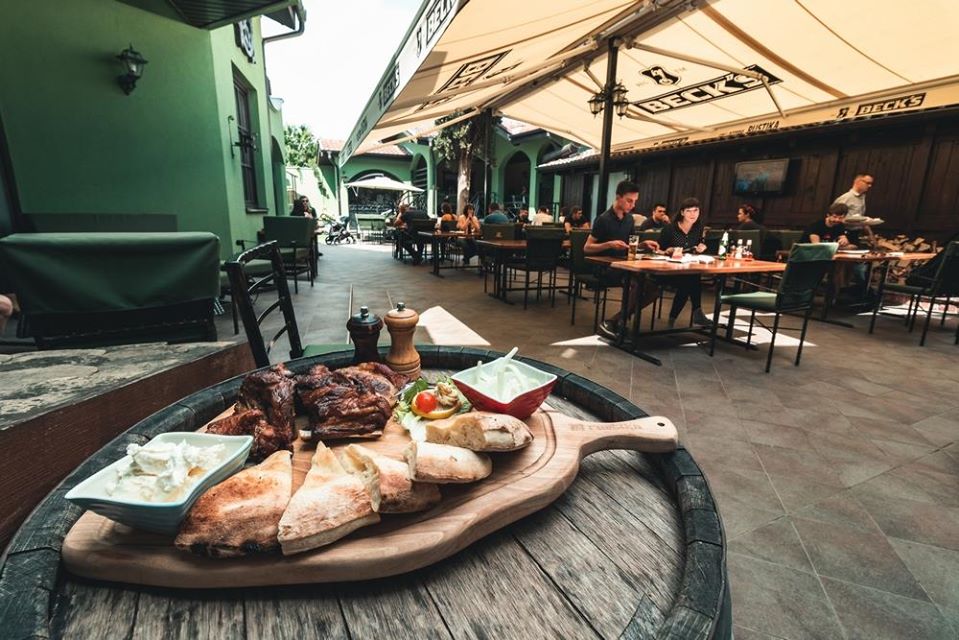
The courtyard at Rustika, a great, casual place to dine and try Slavonska pizza when you visit Osijek © Grill pizzeria Rustika
Food to go / home delivery: Lipov Hlad and Pizzeria Novi Saloon do the best home delivery pizza in the city (Rustika deliver too). Other choices are thin on the ground, save for the standard fast-food chains and pekara (the El Pan bakery on the edge of Sjenjak hood does the best burek with meat).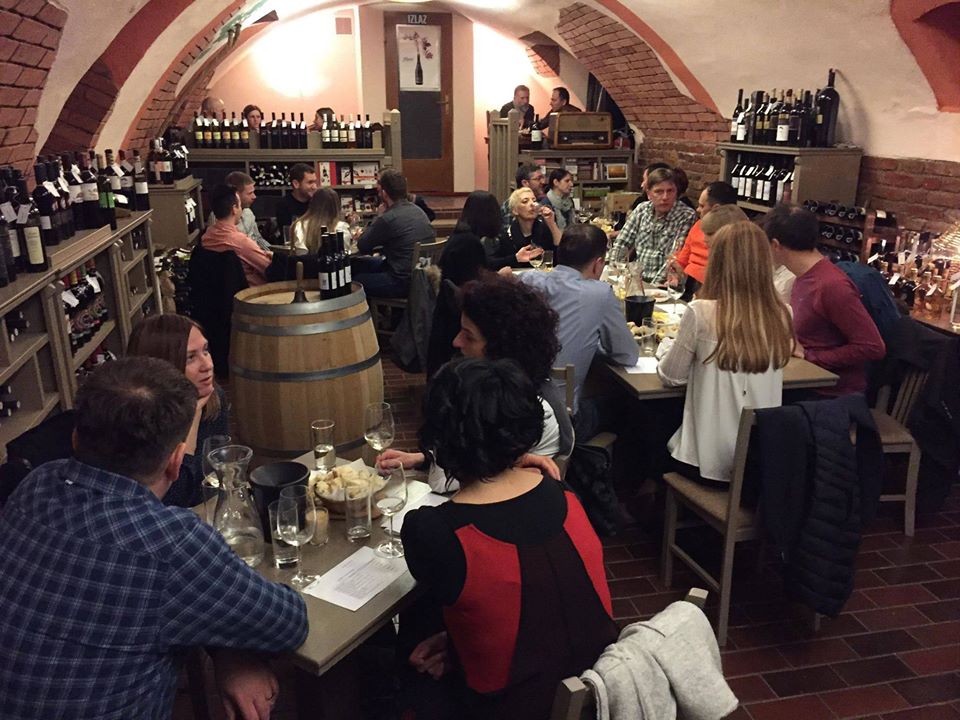
Get to know Slavonian wine when you visit Osijek © Vinoteka Vinita
Where to drink: The simple but extremely passionate Vinoteka Vinita is one of the best places to try Slavonian and Croatian wines, with many top and rarer titles sold by the glass. If you're more into beer, Beertija in the modern city centre has a great range. General Von Beckers on Tvrđa is the best place to try the leading local craft ale, Beckers, but all of the bars on Tvrđa are worth investigating and during the summer their terraces stretch far into the historic square creating a unique atmosphere.
What's new? Osijek's football club is undergoing a renaissance following its purchase by new investors. An impressive new stadium is reaching completion and you shouldn't be surprised to see this team challenging for the top domestic titles, or reaching European competitions, in the near future.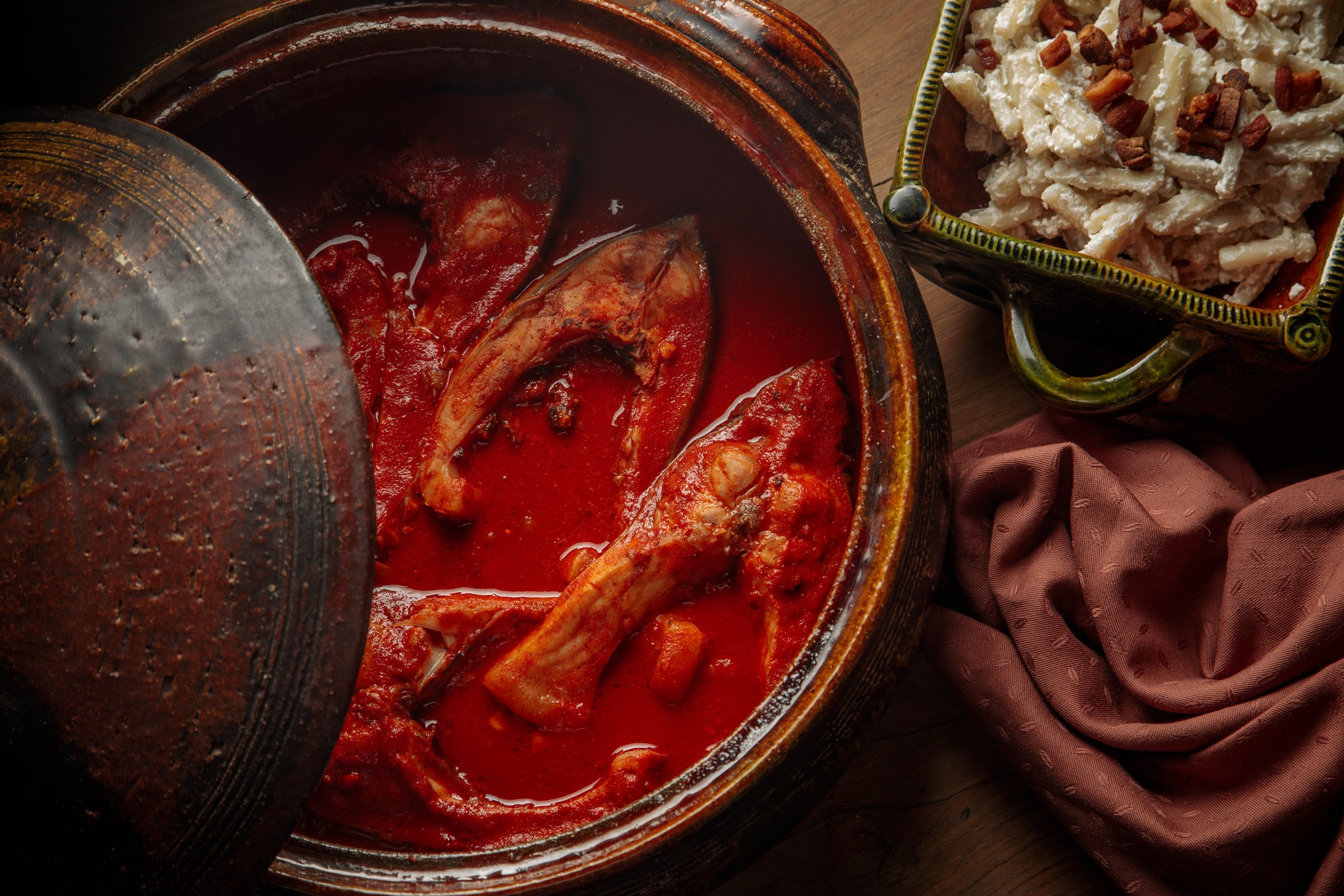
Fiš paprikaš is a Slavonian speciality. Spicy from paprika, it is made from river fish and can often be seen being cooked in a large pot over a blazing open fire if you visit Osijek in warmer months © Romulić & Stojčić
What not to miss: The protected nature park Kopački rit is wonderful to visit at any time of year, a sanctuary for all manner of wildlife, particularly rare species of birds. On Tvrđa, Slama Land Art hosts workshops, art and music events and you'll meet great creative types there. There's an extreme sports event, Pannonian Challenge, which sees international competitors visit Osijek and an annual Osijek Beer Festival which feels more like a street party. There's also a music festival called UFO. Osijek Wine Days and the celebrations celebrating the end of term at the city's sizeable university are each year accompanied by great partying and music performances. Look up the art deco Cinema Urania. At over 100 years old, it's Croatia's best independent cinema outside Zagreb. If you're looking for something a little more upmarket than the aforementioned Copacabana outdoor pools, or if you're visiting in cooler months, the renowned Bizovac Toplice is close by and there are free bus shuttle services from the city. It's a sprawling spa complex with multiple pools, offering fun and wellness therapies. But, whatever you do, don't miss the extraordinary and varied architecture of Tvrđa or Slavonian cuisine.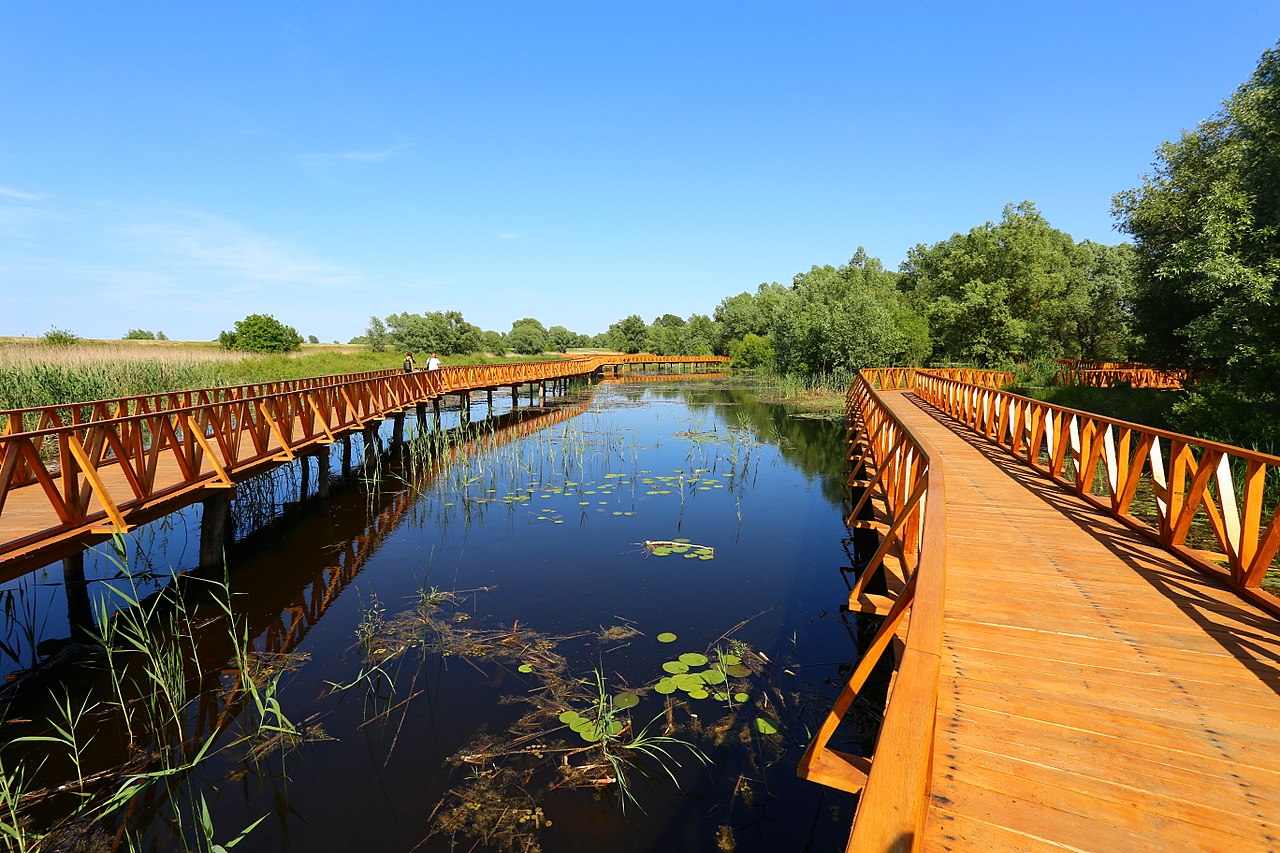
Kopački rit. The nature reserve is a must all year round when you visit Osijek © Misalalic
What to buy: If you're heading somewhere else in Croatia after you visit Osijek, take some Baranja kulen with you for posh sandwiches. Slavonia is famous for its honey, which is protected at an EU level. Take some back home with you. Local designers Lega Lega make cool t-shirts and accessories emblazoned with words exclusively used in the local dialect. Pick up some Slavonian white wine when you visit Osijek. Graševina is the most commonly made white wine in Croatia and the most popular. They make the best Graševina in Slavonia, but also look out for Chardonnay, Pinot Blanc, Pinot Gris, Sauvignon Blanc and Traminac too. There are countless excellent wine producers in Slavonia to look out for, including Kutjevo Graševina, Krauthaker, Galić, Trs, Adžić, Kolar, Enjingi, Antunović, Erdut and Iločki Podrumi.
'Lega' in local dialect is short for colleague. It is a term affectionately (and exclusively) used when speaking to someone from Osijek. Try using it when you visit Osijek © Lega-Lega
On these links you can read about the other destinations in our The Croatian Road Less Travelled series:
Ludbreg - a site of Holy pilgrimage where the historic meets the contemporary
Donji Miholjac - a hidden gem in the heart of the Pannonian basin
For the latest travel info, bookmark our main travel info article, which is updated daily.
Read the Croatian Travel Update in your language - now available in 24 languages
Join the Total Croatia Travel INFO Viber community.
How are Croatian Towns, Cities and Counties Doing with EU Fund Withdrawal?
Just how do various Croatian towns, cities and counties compare in terms of EU fund withdrawal? Some unlikely names have appeared on top...
As Novac/Gradonacelnik.hr writes on the 14th of May, 2019, through the Rural development program, the Republic of Croatia will have over 2.3 billion euro (over 17 billion kuna) from EU funds provided to it to boost competitiveness of agriculture, forestry and processing industries from 2014 to 2020.
The aforementioned EU funds will also be used to improve general living and working conditions, ie, the construction of necessary infrastructure such as kindergartens, fire stations and social housing in rural areas.
As of the end of January this year, at least according to official data, of this more than 17 billion kuna, 10.37 billion kuna was contracted for projects, and a little more than half of that contracted amount was paid out.
Croatian cities, according to that same data (APPRRR), have withdrawn more than 438 million out of a total of 5.66 billion kuna in the past five years. As many as fifteen Croatian towns that are on top of the list in terms of the withdrawal of EU funds from the rural development program are smaller towns, when taking the per capita amount into consideration. That list of Croatian towns which withdrew the most money per capita was led by Nin with 4915 kuna per capita. In total, this ancient town close to the popular destination of Zadar has withdrawn 13.4 million kuna. The town of Nin readily awaited the Rural development programs from 2014 to 2020, Mayor Emil Ćurko stated.
''Investments in project documentation were prepared, public-legal conditions were prepared, investment took place in human resources, all for the purpose of the withdrawal of EU funds. The projects are large, infrastructural, necessary, and we've prepared them so that the maximum amount of European Union funds are used. From each measure, we tried to extract the most funds allowed by the tender condition. We've shaped a project team working on the preparation and implementation of EU projects and we believe that we'll continue to do even better,'' said Ćurko.
Among several other things, Nin received approval for the construction of a kindergarten worth 9.2 million kuna, out of which 6.6 million kuna is being provided by the EU, and 2.6 million kuna is from Nin.
Following Nin are Hrvatska Kostajnica (2745 kuna), Klanjec (2717 kuna), Opuzen (2377 kuna), and Mursko Središće (2276 kuna), followed by Skradin, Grubišno Polje, and Ozalj.
Orahovica has withdrawl 7.4 million kuna until now, and in December, the town was approved once again for almost nine million kuna for the reconstruction and extension of a kindergarten.
''There are still a lot of projects in the plan of the authorities when it comes to other EU funds. They have been prepared in the past year and a little over six months, and the more funds we withdraw from the EU and state funds, the more there is in the budget, which will raise the standard of Orahovica's citizens through various programs,'' said Mayor Ana-Marija Petin.
Mursko Središće, in turn, led the list of total funds received from the Regional development program by the end of January, with 14.3 million kuna of withdrawn funds. This small town in the northernmost part of Croatia received 6.8 million kuna for road construction to help develop the economic zone and 7.4 million kuna for the construction and equipping of kindergartens.
Following in terms of the total amount of funds is Koprivnica, with 13.9 million kuna of withdrawn funds, followed by Slatina with an amount of total withdrawn funds standing at 13.8 million kuna, with Nin coming fourth place with the same amount, and with Karlovac coming fifth on the list, having attracted less than 12 million kuna. Karlovac used those EU funds for the construction of kindergartens, totalling 4.4 million kuna.
On the list of Croatian cities and towns that have withdrawn the most funds, there is another medium-sized town - Bjelovar, which has withdrawn 11.5 million kuna.
In terms of Croatian counties, the Eastern Croatian county of Osijek-Baranja has contracted the most EU funds, or more precisely 1.3 billion kuna for numerous projects. Following are Sisak-Moslavina, Virovitica-Podravina and Pozega-Slavonia, all of which are continental counties.
Make sure to follow our dedicated lifestyle and business pages for much more.


